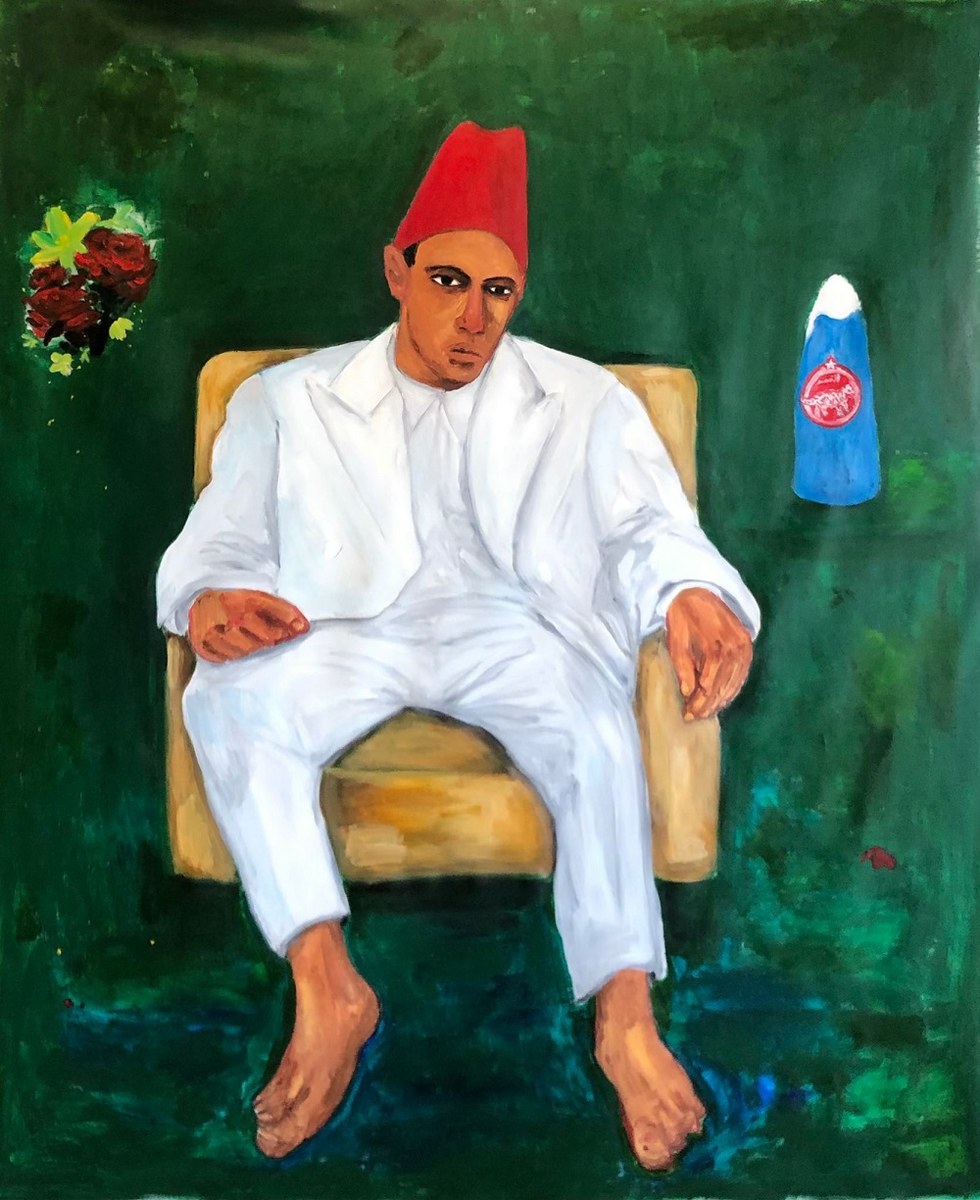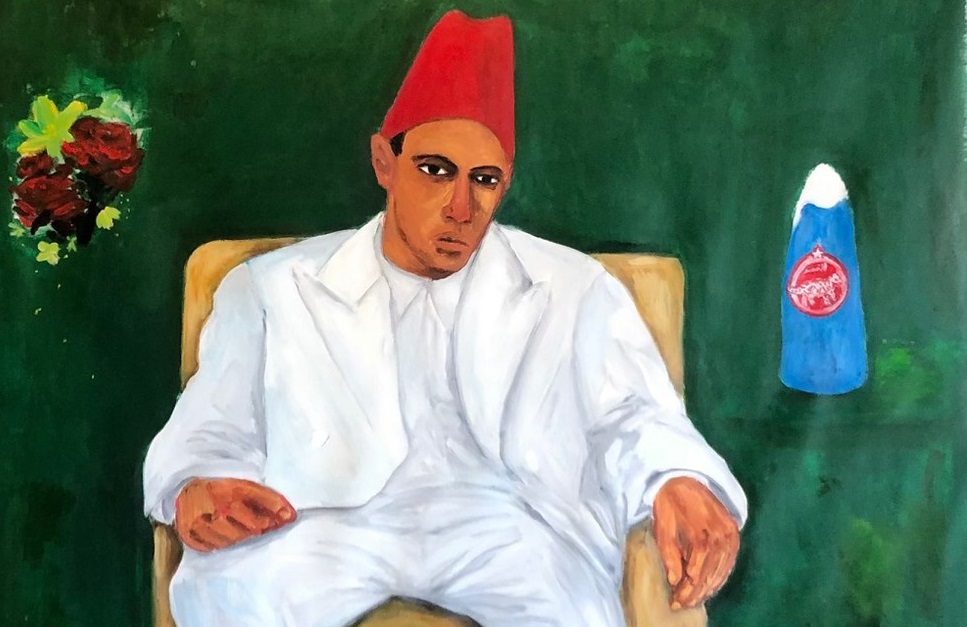How does tradition keep alive within an increasingly globalized world? Anuar Khalifi–a Moroccan artist based between Spain and Morocco, depicts the way Moroccan tradition makes dialogue with contemporary culture. Khalifi’s works deal with some ideas, like colonialism, orientalism, and consumerism.
Khalifi’s paintings have warm colors, ranging from burnt oranges, dark browns, dark green, to deep crimsons. He often portrays a figure sitting casually, wearing traditional clothes, in a certain setting, like home, beach, and surreal space.

‘Na3na3’ (2020). Courtesy of the artist and The Third Line, Dubai
In Na3na3 (2020), Khalifi painted a man in a white suit, sitting on a yellow chair in dark green background. The figure is also wearing a red cylindrical peakless traditional hat called a fez. A bag of Moroccan sugar appears on his left side and a bunch of flowers on his right. He stares ahead but looks like he’s dreaming something. This painting speaks about identity in flux, between traditional and modern, between local and global, in everyday life sight.
Another work, Safi Safari (2021) depicts a man wearing a safari hat, sitting in a chair. He dresses in red-white striped Jellabiya or Jalabiya, traditional clothes that are usually worn in Sudan, Ethiopia, and Eritrea. He also wears a work vest on top of his Jalabiya. His shoes-bright yellow traditional Moroccan babouche is in contrast with the red carpet as ground.
‘Safi Safari’ (2021). Courtesy of the artist and The Third Line, Dubai
On the figure’s left side, there is a Safi Moroccan vase full of flowers. Safi is the earliest city in Morocco that specializes in fine artisan pottery. Behind the figure, a mountain with snow on its top stands. A blue rectangle, like a window, partially covers the nature scenery. “Safi Safari” depicts cultural tension and the way tradition deals with progress, capital, modern and post-modern culture.
Khalifi’s works offer rich and warm cultures of the Middle East and North African. It is symbolized in the traditional outfits like long colorful robes and pointy hats, traditional vases, and Madinah-style houses. He also represents Sufi and mystic symbols in his works.
Khalifi’s paintings have often been compared to Fransisco Goya’s paintings. Goya was a Spanish 18th-19th century painter, known for his romanticism style and his political engagement through arts.
Mixed identity is one of the important themes in Khalifi’s works. He was born in Spain and grew up there. However, he also travels regularly to Morocco, where his parents are from. Through his works, Khalifi wants to express a fluid identity, just like his identity and his mixed upbringing.
Khalifi’s solo exhibitions have been organized in many cities, such as Tanger (Boys don’t cry, Artingis, 2011), Paris (Tourist Go Home, Galerie Kandisha, 2012), and Barcelona (Désorienté, BCN The Mothership, 2015). His latest exhibition is entitled Palimpsests (2021), displayed in The Third Line, Dubai. This exhibition was featuring Khalifi’s works that examine identity and traverse the world, between Spain and Morocco.

